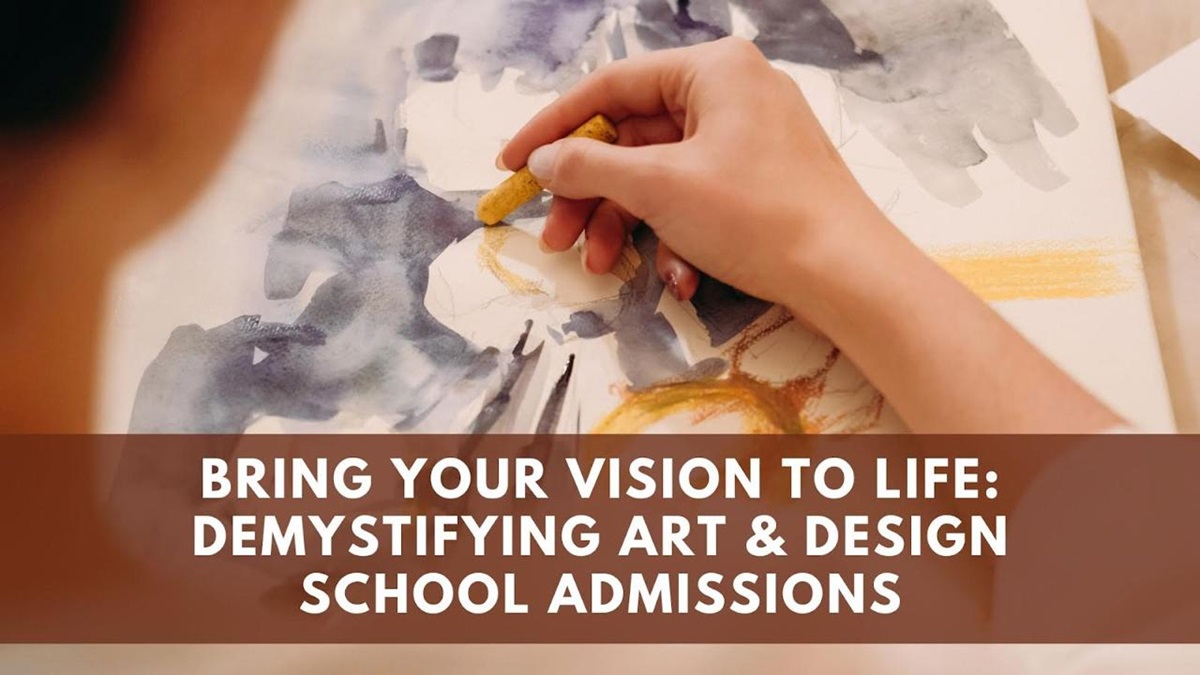Pursuing a creative education can be a thrilling yet overwhelming experience. To help you succeed, this comprehensive guide covers everything from application procedures to admission requirements and program options. Dreaming of a Career in the Arts? Here’s How to Make it Happen.
Application Procedures
1. Research and Choose Your Programs
Before diving into applications, it’s important to research various art and design programs to find the ones that align with your career goals and creative interests. It is extremely crucial to consider factors such as curriculum, faculty, facilities, and location. Look for schools with strong reputations in your area of interest, whether it’s graphic design, fashion, fine arts, or interior design.
2. Prepare Your Portfolio
A well-crafted portfolio is often the centerpiece of your application. It showcases your artistic skills, creativity, and potential. Tailor your portfolio to the specific program you’re applying to, highlighting relevant work that aligns with the program’s focus. Include a diverse range of pieces that show your technical abilities and creative vision. High-quality images, clear descriptions, and a professional presentation are key to making a strong impression.
3. Write a Compelling Statement of Purpose
Your statement of purpose (SOP) is your opportunity to explain why you want to pursue art and design, why you’re interested in that particular program, and how your background has prepared you for this field. Be honest, specific, and enthusiastic about your goals. This is also a chance to convey your passion and unique perspective, which can set you apart from other applicants. While some countries place significant emphasis on SOPs, others prefer supplementary essays, which provide a more focused response to specific questions.
4. Gather Letters of Recommendation
Most art and design programs require letters of recommendation from individuals who can speak to your skills, work ethic, and potential as a student. These could be from teachers, mentors, or professionals who know you well. Choose recommenders who can provide detailed and positive insights into your abilities and achievements.
5. Complete the Application Forms
Fill out the application forms for each program you’re interested in. Pay attention to deadlines and specific requirements, which can vary between schools. Some applications may include additional essays or questionnaires. Be sure to provide accurate and complete information.
6. Attend Interviews or Reviews
Some programs may require interviews or reviews as part of the selection process. This could involve presenting your portfolio, discussing your artistic journey, or demonstrating your skills through practical exercises. Prepare thoroughly and practice articulating your thoughts clearly and confidently.
7. Submit Your Application and Pay Fees
Once you’ve completed all the necessary components, submit your application by the deadline. Be aware of any application fees and make sure to pay them on time. Double-check that all documents and materials have been correctly submitted.
Types of Art & Design Programs
1. Fine Arts Programs
Fine arts programs focus on traditional and contemporary art forms, including painting, sculpture, drawing, and printmaking. These programs often emphasize artistic expression and personal development.
2. Graphic Design Programs
Graphic design programs teach skills related to visual communication, including typography, digital design, and branding. Students learn to create visual solutions for various media, from print to digital platforms.
3. Fashion Design Programs
Fashion design programs focus on clothing and accessory design, including pattern making, textiles, and garment construction. These programs often include elements of fashion history and business.
4. Interior Design Programs
Interior design programs cover the planning and design of interior spaces. Students learn about spatial arrangements, color theory, furniture design, and how to create functional and aesthetically pleasing environments.
5. Industrial Design Programs
Industrial design programs focus on designing products and systems for mass production. This includes everything from consumer electronics to furniture, emphasizing functionality, ergonomics, and aesthetics.
6. Animation and Multimedia Programs
These programs train students in animation techniques, multimedia production, and digital storytelling. They cover areas such as 2D and 3D animation, visual effects, and interactive media.
7. Architecture Programs
Architecture programs prepare students to design and plan buildings and structures. They include coursework in design principles, building systems, and urban planning, combining creativity with technical skills.
Applying to art and design schools involves a combination of showcasing your creative talents, meeting academic standards, and clearly articulating your passion and goals. By understanding the application process, admissions criteria, and types of programs available, you can prepare yourself for a successful application journey. Take the time to research thoroughly, and you’ll be on your way to pursuing a fulfilling career in the arts and design.
With EdNet’s expert support, you can explore top art and design schools, get tips on crafting a standout portfolio and statement of purpose, and stay on track with application deadlines and requirements. From application submission to pre-departure support, EdNet’s dedicated team will assist you every step of the way, ensuring a smooth journey to pursuing your creative dreams abroad.

